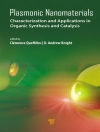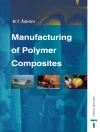A practical guide to polymer coatings that covers all aspects from materials to applications
Polymer Coatings is a practical resource that offers an overview of the fundamentals to the synthesis, characterization, deposition methods, and recent developments of polymer coatings. The text includes information about the different polymers and polymer networks in use, resins for solvent- and water-based coatings, and a variety of additives. It presents deposition methods that encompass frequently used mechanical and electrochemical approaches, in addition to the physical-chemical aspects of the coating process. The author covers the available characterization methods including spectroscopic, morphological, thermal and mechanical techniques.
The comprehensive text also reviews developments in selected technology areas such as electrically conductive, anti-fouling, and self-replenishing coatings. The author includes insight into the present status of the research field, describes systems currently under investigation, and draws our attention to yet to be explored systems. This important text:
• Offers a thorough overview of polymer coatings and their applications
• Covers different classes of materials, deposition methods, coating processes, and ways of characterization
• Contains a text that is designed to be accessible and helps to apply the acquired knowledge immediately
• Includes information on selected areas of research with imminent application potential for functional coatings
Written for chemists in industry, materials scientists, polymer chemists, and physical chemists, Polymer Coatings offers a text that contains the information needed to gain an understanding of the charaterization and applications of polymer coatings.
表中的内容
Preface xv
Acknowledgments xvii
List of Most Important Symbols and Abbreviations xix
1 Introduction 1
1.1 Scope 1
1.2 The Importance of Polymer Coatings 2
1.3 The General Constitution of Polymer Coatings 5
1.3.1 Binders and Crosslinkers 6
1.3.2 Pigments and Fillers 8
1.3.3 Additives 12
1.3.4 Solvents 12
1.4 Coating Requirements 14
1.5 Outline and Approach 15
References 16
Further Reading 16
2 Polymers and Network Characteristics 19
2.1 Polymers 19
2.1.1 Polymer Conformations 22
2.1.2 Entanglements 23
2.1.3 Crystallinity 24
2.1.4 Amorphous Polymers 26
2.2 Polymer Formation 30
2.2.1 Step-growth Polymerization 31
2.2.2 Branching and Gelation 33
2.2.3 Limits to the Preparation of Branched Polymers 36
2.2.4 Chain-growth Polymerization 38
2.3 Polymer Networks 41
2.4 Final Remarks 45
References 45
Further Reading 46
3 Thermoset Resins 47
3.1 Petro-based Thermoset Resins 47
3.2 Epoxy Systems 47
3.3 Acrylates and Acrylics 51
3.4 Isocyanates 53
3.5 Polyurethanes 55
3.6 Polyesters 56
3.7 Renewable Raw Materials 57
3.8 Drying Oils 63
3.9 Alkyds 65
References 68
Further Reading 69
4 Basic Coating Formulations 71
4.1 Coating Compositions in General 71
4.2 Solventborne Formulations 72
4.2.1 Solventborne High Solids Formulations 75
4.2.2 Chemistries of Solventborne High Solids Formulations 80
4.3 Waterborne Formulations 85
4.3.1 Chemistries of Waterborne Formulations 90
4.3.2 Challenges and Applications of Waterborne Formulations 93
4.4 Radiation Curing Formulations 96
4.4.1 Photoinitiators 97
4.4.2 Chemistries of Radiation Curing Formulations 99
4.4.3 Chemistries of Powder Coating Formulations 103
4.4.4 Pros and Cons of Radiation Curing 105
4.5 Final Remarks 106
References 108
Further Reading 108
5 Additives and Particulates 109
5.1 Types of Additives 109
5.2 Thickeners 110
5.2.1 Inorganic Thickeners 110
5.2.2 Organic Thickeners 112
5.3 Surface Active Agents 116
5.3.1 Wetting and Dispersing Agents 117
5.3.2 Antifoaming Agents 117
5.3.3 Adhesion Promoters 118
5.4 Surface Modifiers 120
5.5 Leveling and Coalescing Agents 120
5.6 Catalytically Active Additives 121
5.6.1 Dryers 122
5.6.2 Other Catalysts 123
5.7 Special Effect Additives 128
5.8 Particulates 130
References 133
Further Reading 134
6 Application Methods 135
6.1 Conventional Deposition Techniques 135
6.1.1 Brushing and Rolling 135
6.1.2 Spraying 136
6.2 Laboratory and Industrial Methods 138
6.2.1 Doctor Blade Coating 138
6.2.2 Spin Coating 139
6.2.3 Dip Coating 141
6.3 Powder Coating 142
6.4 An Example: Automotive Coatings 147
6.4.1 Electrodeposition 147
6.4.2 The Automotive Coating Buildup 150
6.5 Network Formation Assessment 151
References 152
Further Reading 152
7 Physical–Chemical Aspects 155
7.1 Intermolecular and Mesoscopic Interactions 155
7.1.1 Intermolecular Interactions 155
7.1.2 Mesoscopic Interactions: Continuum Aspects 159
7.1.3 Lifshitz Theory 164
7.1.4 The Derjaguin Approximation 166
7.1.5 Mesoscopic Interactions: Molecular Aspects 167
7.2 Polymer Solubility 170
7.3 Interfacial Aspects 173
7.3.1 Surface Thermodynamics 173
7.3.2 Representative Behavior 178
7.3.3 Wetting of Ideal Surfaces 181
7.3.4 Estimating Surface Helmholtz Energy 184
7.3.5 Wetting of Real Surfaces 189
7.4 Dispersions 193
7.5 Emulsions 196
7.5.1 Basic Types of Emulsions 196
7.5.2 The HLB Concept 198
7.6 Coagulation Kinetics 202
7.6.1 Unhindered Coagulation 202
7.6.2 Hindered Coagulation 204
7.7 Self-assembly 207
7.7.1 SCF Computations 207
7.7.2 An Example: Surfactant Modeling 209
7.7.3 Another Example: Fluorine Segregation 212
7.8 Final Remarks 213
References 213
Further Reading 219
8 Chemical and Morphological Characterization 221
8.1 The Need for Characterization 221
8.2 IR and Raman Spectroscopy 222
8.3 NMR 227
8.4 Functional Group Analysis 236
8.5 XPS, SIMS, and LEIS 239
8.6 SEC 241
8.7 MALDI–MS 242
8.8 XRD 245
8.9 Optical Microscopy 250
8.9.1 Phase Contrast Microscopy 253
8.9.2 Fluorescence Microscopy 254
8.9.3 Confocal Scanning Microscopy 254
8.9.4 Polarized Light Microscopy 255
8.10 Electron Microscopy 256
8.10.1 TEM 256
8.10.2 SEM 259
8.10.3 STEM 260
8.10.4 Sample Preparation and Related Issues 260
8.11 Surface Probe Microscopy 262
8.12 Thickness and Beyond 265
8.13 Final Remarks 266
References 266
Further Reading 271
9 Thermal and Mechanical Characterization 273
9.1 Thermal Characterization 273
9.1.1 DSC 273
9.1.2 TGA 277
9.2 Permeability–Diffusivity–Solubility Analysis 278
9.3 Mechanical Constitutive Behavior 285
9.3.1 Analogous Models 288
9.3.2 Generalization: The Boltzmann Superposition Principle 291
9.3.3 Dynamic Response 293
9.3.4 The Time–Temperature Equivalence 296
9.3.5 The Free Volume and Other Approaches 297
9.4 A Brief Review of Experimental Data 300
9.4.1 Local and Cooperative Processes 301
9.4.2 Chain Motion 303
9.4.3 Mechanisms in Partially Crystalline Materials 306
9.5 Mechanical Characterization 307
9.5.1 DMTA 307
9.6 Hardness 312
9.6.1 Vickers, Knoop, Berkovich, and Brinell Hardness 312
9.6.2 Nanoindentation 314
9.6.3 Estimating the Stress–Strain Curve 315
9.6.4 Empirical Hardness Tests 316
9.7 Internal Stress Analysis 317
9.8 Adherence 319
9.8.1 Thermodynamic Considerations 319
9.8.2 Thermomechanical Considerations: Monoliths 323
9.8.3 Thermomechanical Considerations: Bimaterials 330
9.8.4 Coating Adherence 334
9.8.5 Testing Coating Adherence 337
9.8.6 Practical Tests 341
9.9 Final Remarks 342
References 342
Further Reading 345
10 Rheological Aspects 347
10.1 The Importance of Rheology 347
10.2 Rheological Characterization 348
10.2.1 Hydrodynamic Interactions 352
10.2.2 Dissolvable Polymers 359
10.3 Rheological Control of Paints 362
10.3.1 Powder Coatings 362
10.3.2 Thickening in Waterborne Paints 363
10.4 Viscosity of Paints During Curing 366
References 368
Further Reading 370
11 Appearance 371
11.1 Defects 371
11.2 The Characterization of Color 379
11.2.1 Light Sources 380
11.2.2 Color Sensing, Perception, and Quantification 381
11.2.3 Scattering, Absorption, and Color 384
11.2.4 Addition and Subtraction Systems 387
11.2.5 Color Tolerancing 391
11.3 The Characterization of Feel or Haptic Property 393
11.3.1 QDA of Haptic Coatings: An Example 394
References 397
Further Reading 398
12 Electrically Conductive Coatings 399
12.1 Typical Applications 399
12.2 Electrical Conductivity Measurements 401
12.3 Intrinsically Conductive Polymers 403
12.3.1 Some Conductivity Theory 406
12.3.2 Simple Band Theory 407
12.3.3 Doping 413
12.3.4 Hopping 416
12.4 An Example: P3HT/PCBM Photovoltaics 418
12.5 Conductive Composites 423
12.5.1 A Glimpse of Percolation Theory 423
12.5.2 Other Approaches 428
12.5.3 The Influence of Aspect Ratio 430
12.5.4 Conductive Particles 431
12.6 Some Examples of Conductive Composite Coatings 434
References 438
Further Reading 441
13 Marine Anti-fouling Coatings 443
13.1 Marine Biofouling 443
13.2 Evolution of Marine Coatings toward Green Anti-fouling Approaches 445
13.3 Principles for Preventing Adhesion or Promoting Detachment of Biofoulants 448
13.4 Nontoxic, Non-biocide-release Anti-fouling Coatings 451
13.4.1 Detachment of Biofoulants 451
13.4.1.1 Silicone-based Materials 453
13.4.1.2 Fluorine-based Materials 458
13.4.1.3 Combined Fluorine–Silicone-based Materials 461
13.4.2 Preventing Attachment of Biofoulants 462
13.4.2.1 PEG-based Materials 463
13.4.2.2 Self-assembled Monolayers 465
13.4.2.3 Other Approaches 466
13.5 Recent and Future Approaches 469
13.5.1 Amphiphilic Approach 469
13.5.2 Topographic Approach 472
13.6 Final Remarks 475
References 475
Further Reading 479
14 Self-replenishing and Self-healing Coatings 481
14.1 Self-healing and Self-replenishing: Scope and Limitations 481
14.2 Damage Recovery on Different Length Scales: Preemptive Healing 482
14.3 Approaches to Self-healing Coatings 486
14.3.1 Encapsulated Liquid Binders and Particles 487
14.3.2 Deformation and Recovery in Networks 489
14.3.3 Stress Relaxation in Reversible Networks 493
14.3.4 Reversible Covalent Networks 498
14.4 Industrial Practice 502
14.5 Approaches to Self-replenishing Coatings 504
14.5.1 Barrier and Corrosion Protection 505
14.5.2 Interfacial Bonding Between Dissimilar Materials 506
14.6 Self-replenishing Low Surface Energy Coatings 508
14.6.1 Low Surface Energy (Hydrophobic) Polymeric Coatings 509
14.6.2 Time Recovery of the Surface Self-replenishing 514
14.6.3 Surface-structured Superhydrophobic Polymeric Coatings 515
14.6.4 Further Remarks 521
14.7 Scenarios for Further Options 522
14.7.1 Residual Network Reactivity 522
14.7.2 Segregation of Interactive Chain Ends 523
14.7.3 Multilayer and Graded Coatings 524
14.8 Final Remarks 524
References 525
Further Reading 531
15 What’s Next 533
15.1 Generic Problems and Challenges 533
15.2 What Else? 535
15.3 What’s Next? 537
References 538
Appendix A: Units, Physical Constants, and Conversion Factors 541
Basic and Derived SI Units 541
Physical Constants 541
Conversion Factors for Non-SI Units 542
Prefixes 542
Greek Alphabet 542
Standard Values 543
Appendix B: Data 545
Index 549
关于作者
Gijsbertus de With has been full professor in materials science at Eindhoven University of Technology (TU/e) since 1995. After graduating from Utrecht University and receiving his Ph D in 1977 from Twente University, he joined Philips Research Laboratories, Eindhoven. In 1985 he was appointed part-time professor and in 1995 he became full professor at TU/e. His research interests include structure and interfacial phenomena related to the chemical and thermomechanical behavior of multi-phase materials. He has (co)-authored more than 350 research papers and holds about 15 patents. Throughout he has cooperated with other researchers, both from academia and industry and co-organized the Coatings Science International conferences from 2004 to 2014. In 2006 his two-volume monograph Structure, Deformation, and Integrity of Materials was published, followed by Liquid-state Physical Chemistry in 2013.












